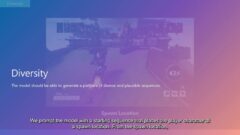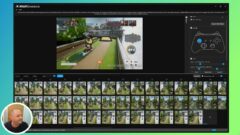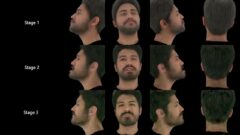60 GHz Single-Chip CMOS Digital Radios and Phased Array Solutions for Gaming and Connectivity
- Joy Laskar | Georgia Institute of Technology
The proliferation of bandwidth hungry multimedia applications has pushed the requirement for new multi-gigabit wireless solutions well beyond the gigabit per second. Similar cost structure and power consumption as current high volume wireless connectivity solutions (Wi-Fi and Bluetooth) is a requisite to address the consumer electronics market. Therefore, standard digital CMOS and plastic packaging is the only platform of choice for a successful adoption. 60GHz is today the leading technology enabling 3-5Gb/s at 3-5m, in quasi-NLOS for 200mW power budget. It offers a roadmap toward data rate beyond 15Gb/s and combined scenario with Wi-Fi. This presentation will highlight the world first highly integrated 60 GHz CMOS/PCB single-chip digital phased array solution, embedded in QFN package. This represents a unique opportunity to develop low power 60GHz multi-gigabit radio at a similar cost structure as a Bluetooth radio, addressing the needs of a multitude of bandwidth hungry wireless multimedia applications such as high definition streaming and massive side loading. The convergence of 60GHz CMOS digital radio, phased array technology, low power multi-gigabit mixed-signal processing low cost filter, phased array antenna embedded in standard package is discussed. In addition, uncompressed HDMI video streaming is demonstrated for the first time, using a standard battery (AAA) operated compact 60GHz CMOS/PCB QFN based module. These solutions offer the lowest energy per bit transmitted wirelessly at multi-gigabit rate, reported till date, to meet the very stringent low-power specifications for battery operated consumer electronic portable devices.
Speaker Details
Dr. Joy Laskar received his B.S. degree (Computer Engineering with Math/Physics Minors, summa cum laude) from Clemson University and his M.S. and Ph.D. degrees in Electrical Engineering from the University of Illinois at Urbana-Champaign. Prior to joining Georgia Tech in 1995, Dr. Laskar was a visiting professor at the University of Illinois at Urbana-Champaign and an assistant professor at the University of Hawaii at Manoa. At Georgia Tech he holds the Schlumberger Chair in Microelectronics in the School of Electrical and Computer Engineering. He is also Founder and Director of the Georgia Electronic Design Center, and he heads a research group of 50 members and has graduated 36 Ph.D. students since 1995. He has authored or co-authored more than 500 papers, several book chapters and three books (with another book in development). He has given numerous invited talks, and he has more than 40 patents issued or pending. Dr. Laskar and his research team have founded four companies to date: an advanced WLAN IC Company: RF Solutions, which is now part of Anadgics (Nasdaq: Anad), a next-generation analog CMOS IC Company, Quellan, which is developing collaborative signal-processing solutions for the enterprise, video, storage and wireless markets and two more companies which are part of Georgia Tech’s Venture lab process. Dr. Laskar was elected IEEE Fellow in 2005 and served as General Chairman of the IEEE International Microwave Symposium 2008. He currently serves as an elected member of the IEEE MTT-S Administrative Committee, Chair of the IEEE MTT-S Education Committee, and Vice-Chair of the IEEE MTT-S Executive Committee. Dr. Laskar’s honors include the Army Research Office’s Young Investigator Award in 1995, the National Science Foundation’s CAREER Award in 1996, NSF Packaging Research Center Faculty of the Year in 1997, and co-recipient of the IEEE Rappaport Award (Best IEEE Electron Devices Society Journal Paper) in 1999. He was faculty advisor for the 2000 IEEE MTT IMS Best Student Paper award, was Georgia Tech, Faculty Graduate Student Mentor of the year in 2001, received a 2002 IBM Faculty Award, and the 2003 Clemson University College of Engineering Outstanding Young Alumni Award. He was the 2003 recipient of the Outstanding Young Engineer award of the Microwave Theory and Techniques Society and was named an IEEE Fellow in 2005. For the 2004-2006 term, Dr. Laskar served as an IEEE Distinguished Microwave Lecturer and currently is an IEEE EDS Distinguished Lecturer. He received Georgia Tech’s “Outstanding Faculty Research Author” award in 2007 and ECE’s Distinguished Mentor Award in 2008.
Watch Next
-
-
-
-
WHAM Demonstrator tutorial
- Martin Greyson
-
-
-
-
-
MSR Talk: Unsupervised Speech Reverberation Control with Diffusion Implicit Bridges
- Eloi Moliner,
- Hannes Gamper
-
Storing data for thousands of years | Microsoft Project Silica
- Erika Aranas,
- Richard Black,
- Ariel Gomez Diaz










